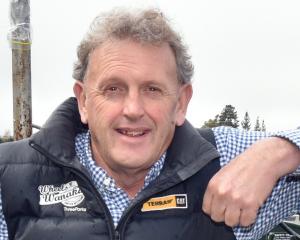
Fisheries New Zealand acting fisheries management director Marianne Lukkien confirmed the November 10 catch this week.
She said yesterday the Hector’s dolphin was caught 11 nautical miles from where a breeding-age female Hector’s dolphin was caught in a set net at the end of April.
That catch, with an observer on board, was the first reported fishing-related Hector’s dolphin death in the area since at least 2012.
It resulted in a voluntary, temporary closure of where it was caught.
That closure was lifted at the end of September, when the "fishing year" ended.
This new catch was outside that area, Ms Lukkien said.
This was also officially the first Hector’s dolphin caught this fishing year, which began on October 1.
From October all set net vessels in the area had on-board cameras, she said.
A camera was used in this instance to identify the protected dolphin after the fishers first misidentified the type of dolphin caught.
And because the carcass of the dolphin was not brought in by the fishers as required, but instead released at sea, the matter had been referred to Fisheries Compliance and its inquiries were ongoing, she said.
Department of Conservation marine by-catch and threats manager Kris Ramm said the fishers reported the catch through their electronic reporting system.
Now, additional context around the circumstance of the catch was being gathered through engagement with a liaison officer, he said.
Forest & Bird Otago-Southland regional conservation manager Chelsea McGaw said if the fishing year was in line with the calendar year, then the region would be at its maximum allowable fisheries-related mortality limit of two Hector’s dolphins.
If the limit was reached "the only real option available" would be to shut the fishery, Ms McGaw said.
The catch and the "questionable" misidentification reinforced the importance of cameras and observers, she said.
University of Otago marine science emeritus professor Steve Dawson said calling this incident the first catch of the year was "splitting hairs" in an area where about 40 Hector’s dolphins lived.
He too said he found it hard to believe that the fishers did not know they had caught a Hector’s dolphin.
"This is two captures from a small area with a very, very small number of dolphins.
"It’s time for MPI to do something properly.
"And really what they need to do is close down this fishery."
Harbour Fish director Chanel Gardner said the dolphin was caught outside where marine science experts expected the animals to be — and area closures should be a "last, last resort".
"We want to take practical, common-sense steps towards resolving the issue, not arbitrary steps that don’t achieve anything but still make people feel OK."
The commercial fleet that fished off Otago Peninsula was being fitted with dolphin deterrent devices, at Harbour Fish’s expense, from next week.
And this incident showed fishers were reporting and did their best with what little they saw, she said.
She said the fishers did not see the full dolphin, which was only pulled out of the water for a matter of moments.
It was reported as a dusky dolphin, she said.
"From our point of view ... we see it as an example of the success of the camera rollout.
"When the camera footage was reviewed — it was four seconds of footage.
"It could happen to any vessel at any place.
"It’s unfortunate ... for all of us.
"No-one wants to catch a Hector’s dolphin."












